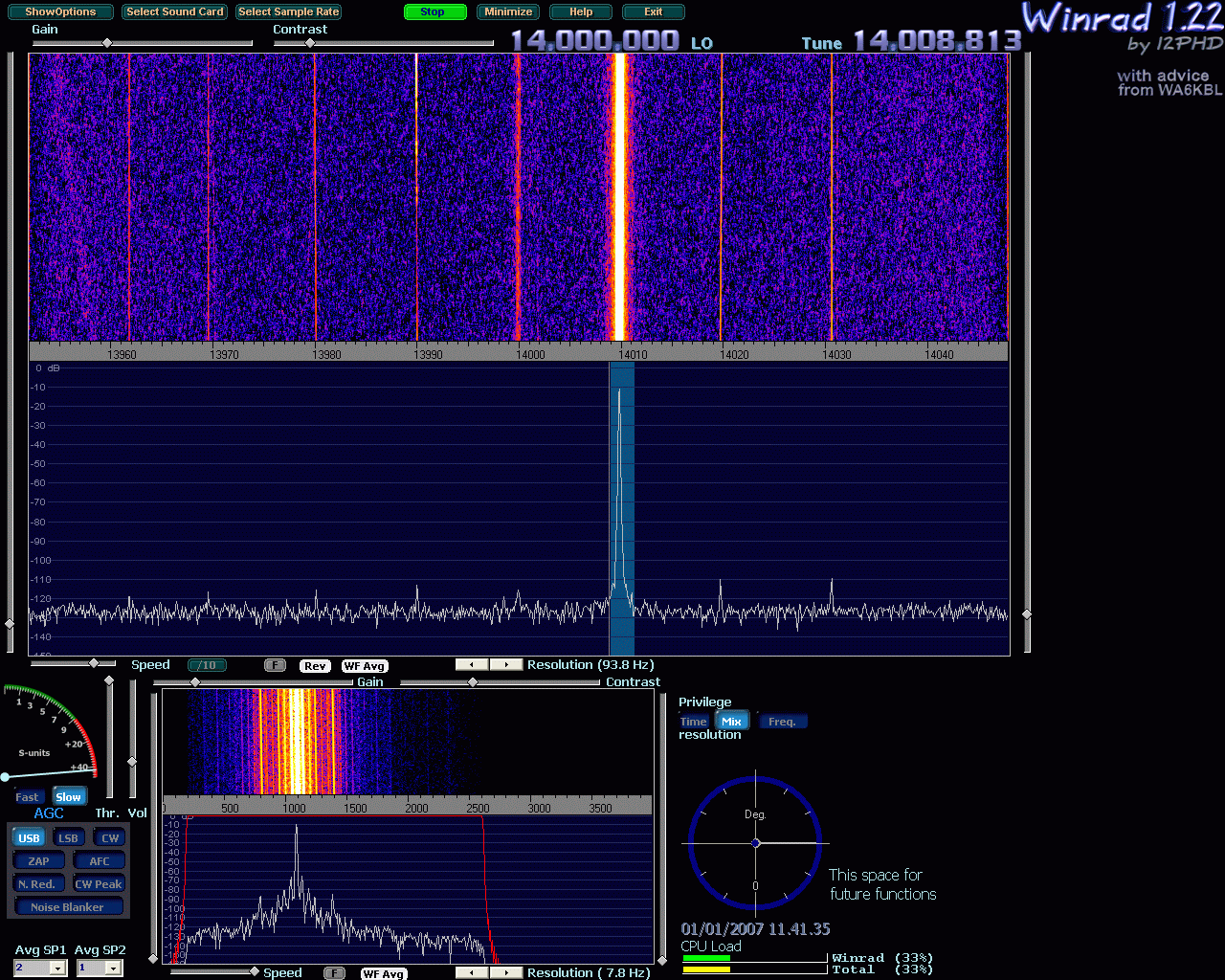
Measurements on IK1ODO QSD frontend
Setup
The front-end is connected to an EMU 1616 audio interface. This interface has two gain settings for the line input: +4dBu full scale (LO sens, 4Vrms) and -10dBu full scale (HI sens, 0.8Vrms). The gain of the front-end is calculated to reach the full dynamic range of the audio interface in LO sens setting. In this way 0dBfs on the A/D scale corresponds to -3dBm RF input.
I always used Winrad 1.22 by I2PHD as the processing and measuring software. The local oscillator signal is generated by a Rohde&Schwarz SMHU58 signal generator, and two HP 8640B generators were used for the test. The combiner is a MCL ZFSC2-4.
Single signal SFDR
To measure the spurious-free dynamic range of the receiver I put a signal at the input, and observed the output spectrum. The spectrum is populated by image signals and harmonics. The signal at 14020 kHz is the audio second harmonic, generated mainly inside the mixer. The signal at 14030 kHz is the 3rd harmonic of the signal generator (approx. -60dBc), attenuated by the input filter (approx.30dB), and the mixer 3rd harmonic rejection (approx. 10dB). It is present since this kind of mixer has poor rejection of odd harmonics of the tune frequency. The signal at 14000kHz is the zero frequency noise response, mainly coming from line hum and 1/f noise in the audio interface; that at 13990kHz is the IF image. The audio gain setting is high; the RF signal level is -20dBm, and SFDR is 100dB.

Same as before, but input level at -10dBm and gain setting is low. The 2nd harmonic, generated by the mixer and audio chain non-linearities, dominates the spectrum; now SFDR is approx. 90dB.
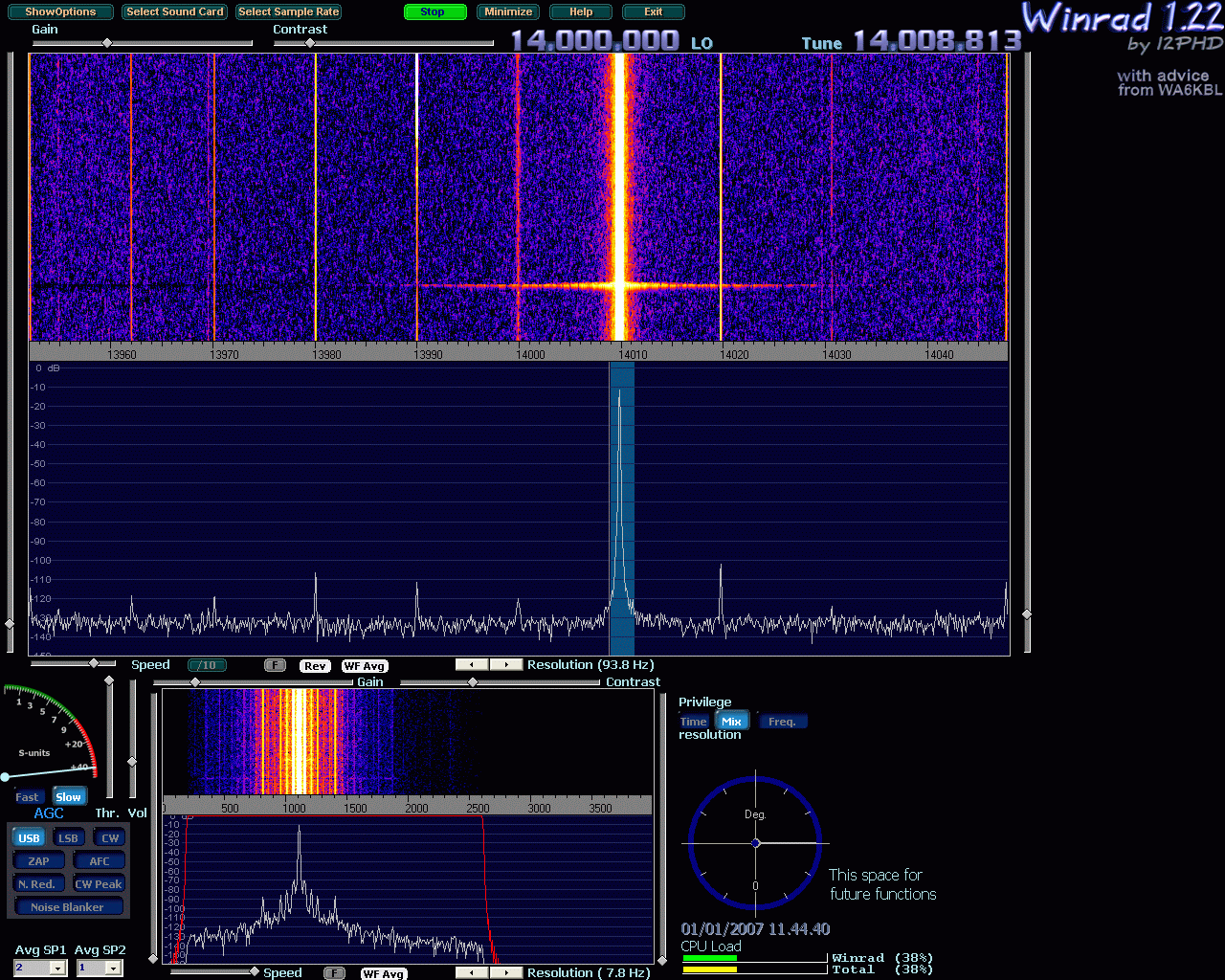
To determine the MDS I used an HP 3400A TRMS voltmeter connected to the audio output of the EMU 1616, preceded by a LPF at 4kHz. This is necessary since the audio output contains a lot of wide band noise over 20kHz. The measurement band is 2.4kHz. With the current setup the measured MDS is -128dBm for 3dB (S+N)/N using the high gain setting of the audio interface. With the low gain setting the audio interface noise prevails, and the measured MDS is -123dBm. Please note that those figures are obtained without using a preamplifier.
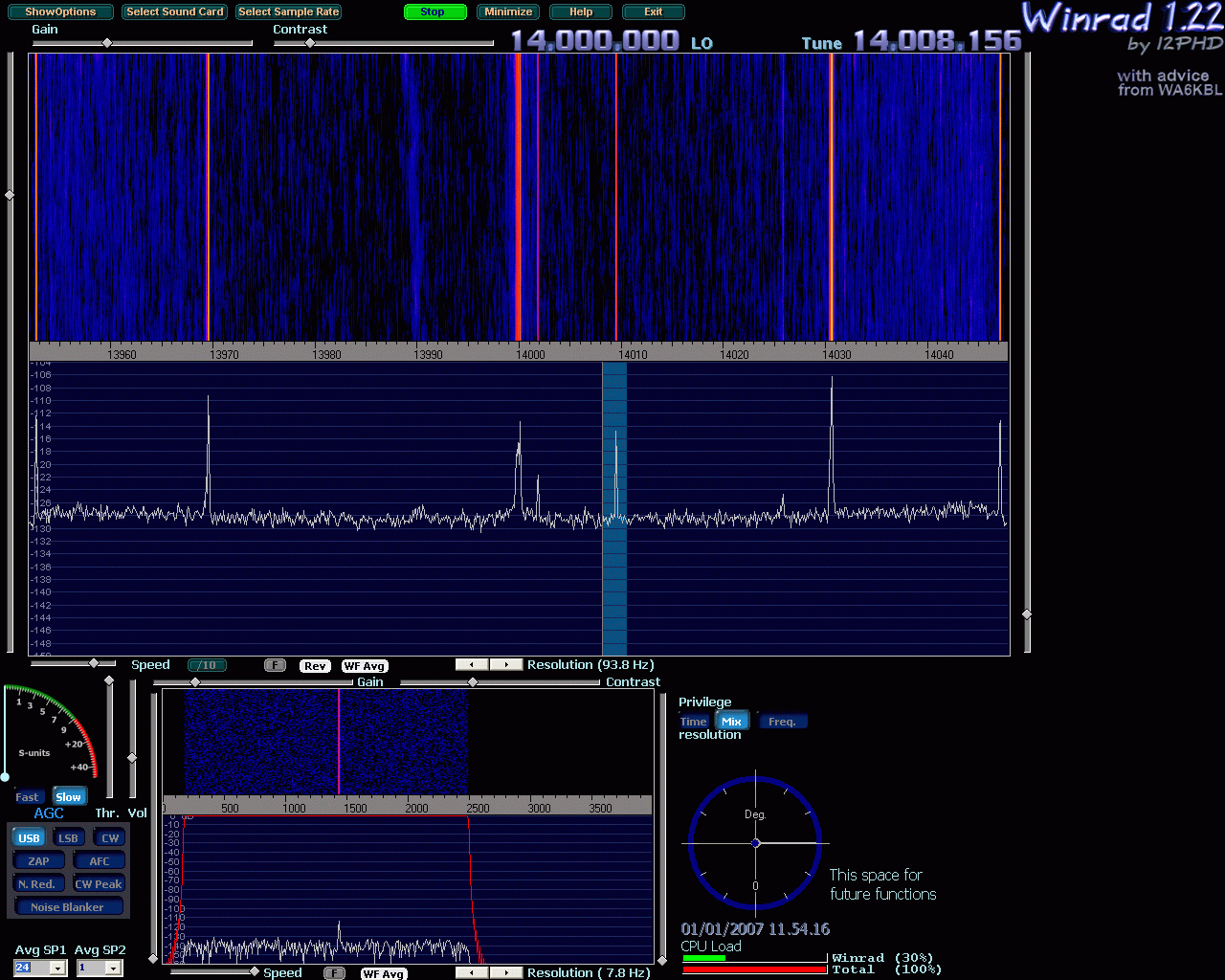
Then I measured the 3rd order IMD. The two tones are spaced by 9kHz for measuring convenience, but with this kind of near-zero IF mixers the IMD does not change very much with tone spacing (as it would be in a conventional receiver using roofing filters). The gain setting is high, and the signal level of each tone is -24dBm. The dynamic range is 102dB, and the calculated 3rd order intercept point is +25dBm.
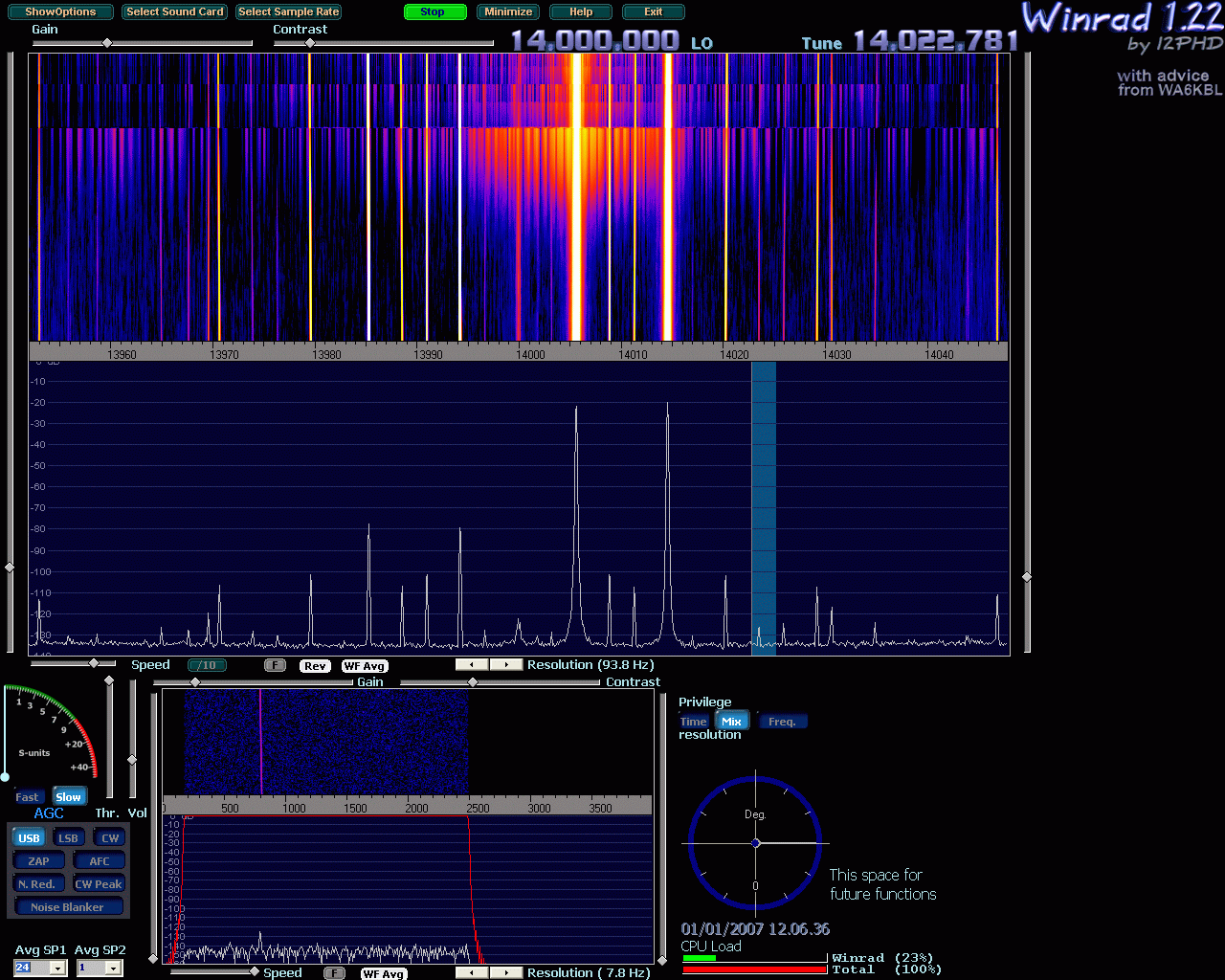
Another measurement, this time with low gain setting. Now the MDS is -123 dB, and the tone level is -17dBm, giving a dynamic range of 106dB and a 3rd order IP3 of +36dBm.
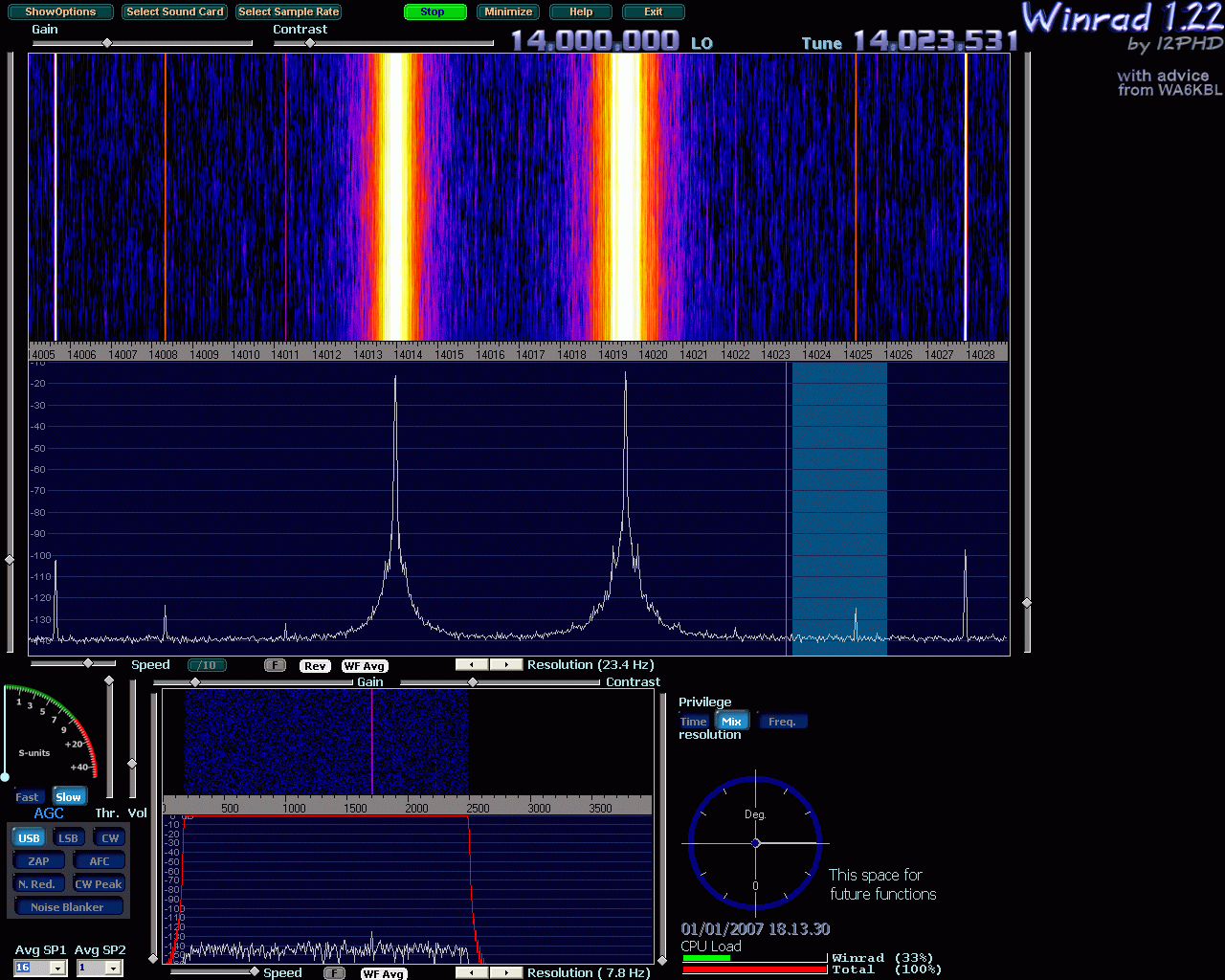
The previous picture is part of another measurement session, and the frequencies are changed, but the figures are the same. The measurement is probably limited by the noise sidebands of my 8640B generators – also, one has less noise than the other. I tried with different signal generators (HP, Marconi, R&S) but the 8640B is still the best one for such tests. The difficult point is the relative isolation between the two generators, and the IMD of the combiner. In any case 105dB seems to me a good figure!
73 de Marco IK1ODO
Circuit Description More tests